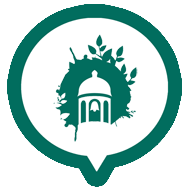The first home farm of the duke was a half-timbered building with a thatched roof situated close to the Palace. Around 1730, a big fire broke out on the farm, which could have spread to the Palace. The duke therefore decided to build a new farm at a safe distance from the Palace.
Augustenborg Manor Farm was built as a home farm to the Palace in 1733. A home farm was an independent farm from which the lands and production of a larger estate were managed. The Palace was the duke’s princely residence, and the manor farm was the centre of the estate’s farming.
In the 18th century, the home farm was run by tenants who had the lease for a long period and lived on the farm. The original main building from 1733 was later replaced by the current one from 1827. The building is one continuous wing with whitewashed façades and a wide wall dormer on both sides of the house.
In 1852, the Danish state seized the manor farm and installed a trustee, but in 1860 the farm was put up for public auction at the Palace Hotel (Slotshotellet). Here it was purchased by Chamber Councillor Hans Frederik Fenger, who the year before had moved to Augustenborg in order to buy one of the ducal farms.
From the original Augustenborg Manor Farm there remains a large, thatched barn dating from 1733. The barn is built in the same red and yellow stones as the stable yard of the Palace. With a floor area of 744 square metres, it is one of the largest thatched barns in Denmark. It is built on a foundation of large boulders and five courses of red monk bricks (large medieval bricks). Inside, the building consists of a series of large rooms with unobstructed views of the impressive roof structure. A “twin barn” of the same size, used for dairy cattle and feed, unfortunately burned down in 1908.
During the hurricane in 1999, the thatched roof was badly damaged and over 10,000 bundles of water reed were used for the repair. Because the barn is a listed building, the roof had to be repaired using the old methods.
Since the auction in 1860, the farm has been in private hands. Today it is owned by the Nissen family, who maintain the buildings and the pond very well. The pond is the last remaining of the four carp ponds belonging to the duke.

